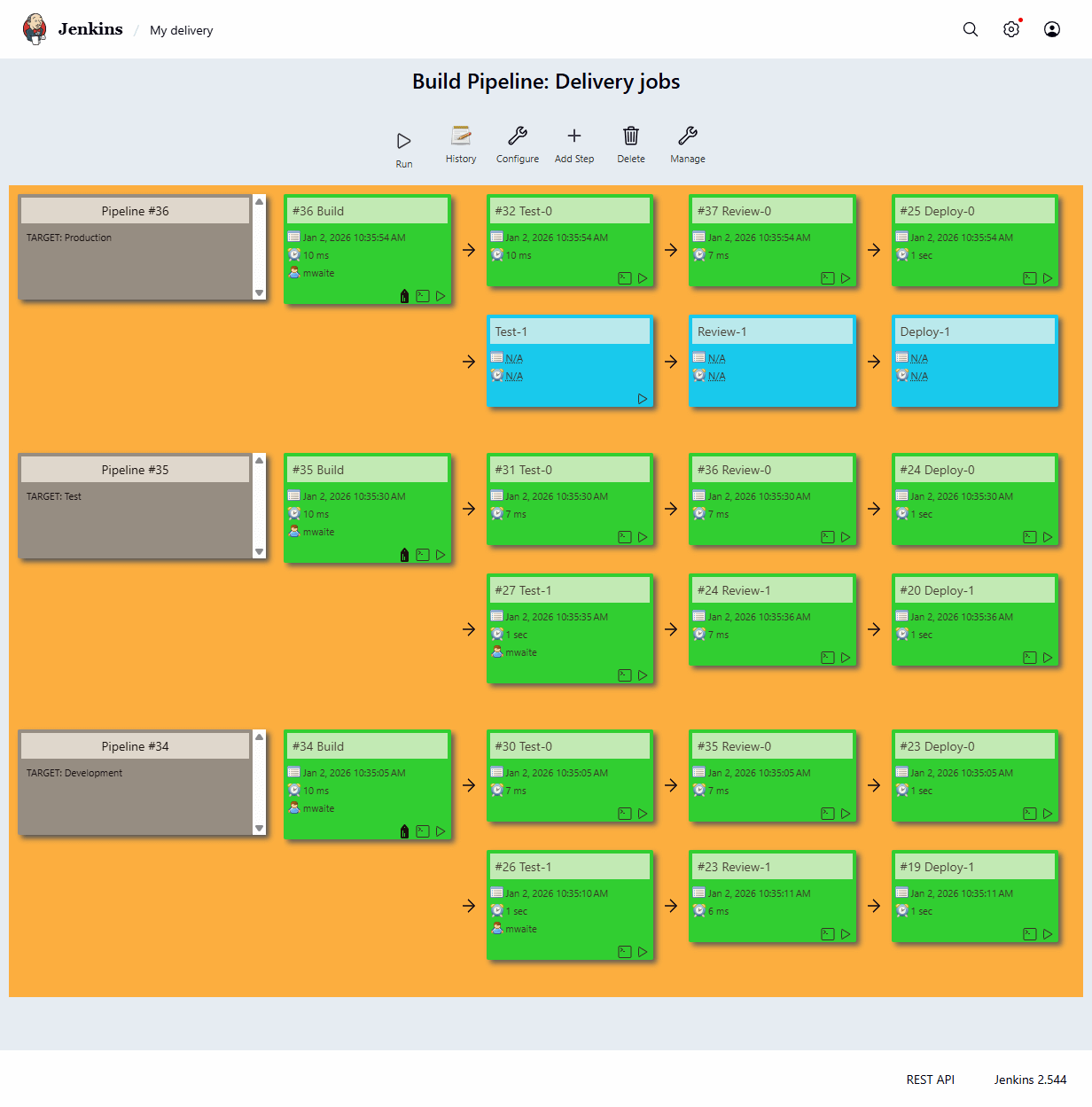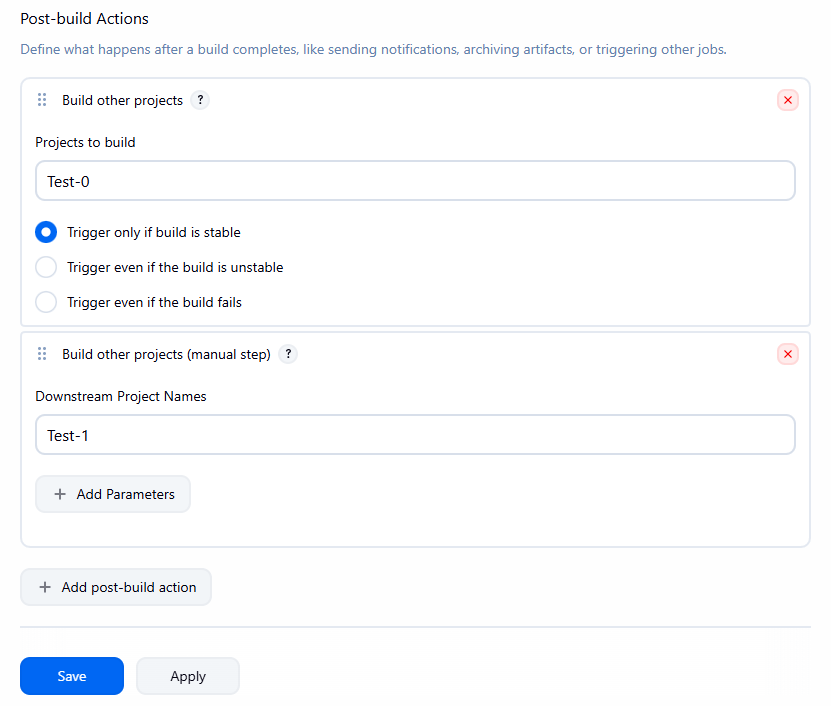This plugin provides a visualization of the upstream and downstream relationships between freestyle and multi-configuration jobs that form a build pipeline. The visualization helps users understand the current state of a group of related jobs (either freestyle or multi-configuration). In addition, it offers the ability to define manual triggers for jobs that require intervention prior to execution (e.g., an approval process outside of Jenkins).
The plugin does not support Jenkins Pipeline jobs. Use the Pipeline Graph View plugin or the Pipeline Stage View plugin for Jenkins Pipeline jobs.
The plugin has known issues with Jenkins Content Security Policy. Installations requiring this plugin cannot enforce CSP protection without breaking its functionality.
The plugin is up for adoption and is seeking new maintainers.
Continuous Integration has become a widely adopted practice in modern software development. Jenkins is a great tool for Continuous Integration.
Taking it to the next level: Continuous Integration can become the centerpiece of your deployment pipeline, orchestrating the promotion of a version of software through quality gates and into production. By extending the concepts of CI you can create a chain of jobs, each one subjecting your build to quality assurance steps. These QA steps may be a combination of manual and automated steps. Once a build has passed all of these, it can be automatically deployed into production.
In order to better support this process, we have developed the Build Pipeline Plugin. This gives the ability to form a chain of jobs based on their upstream and downstream dependencies. Downstream jobs may, as per the default behaviors, be triggered automatically, or by a suitable authorized user manually triggering it.
You can also see a history of pipelines in a view, the current status, and where each version got to in the chain based on it revision number in VCS.
- Install the plugin using the Jenkins Plugin Manager and restart.
- Create a view of the new type, Build Pipeline View. You will then be redirected directly to the configuration page.
- The table below outlines each interesting parameters controls:
| Parameter | Description |
|---|---|
| Name | The name of the Build Pipeline View |
| Description | This message will be displayed on the view page. Useful for describing what this view is about, or linking to relevant resources. Can contain HTML tags. |
| Build Pipeline View Title | Gives a title to the page that displays the view |
| Select Initial Job | This is the first job in the build pipeline. It will traverse through the downstream jobs to build up the entire build pipeline. Select from a drop-down list of jobs. |
| No of Displayed Builds | The number of historical builds to be displayed on a page. |
| Restrict triggers to most recent successful builds | Select this option to restrict the display of a Trigger button to only the most recent successful build pipelines. |
| Always allow manual trigger on pipeline steps | Select this option if you want to manually execute or re-execute any step of the pipeline at any time. |
| Show pipeline parameters | Select this option if you want to display the parameters used to run the first job in the pipeline. |
- Navigate to the Job Configuration page.
- Scroll down to the Post-build Actions section.
- For an Automated downstream build step: To add a build step that will trigger automatically upon the successful completion of the previous one:
- Select the Build other projects check-box.
- Enter the name(s) of the downstream projects in the Projects to build field. (n.b. Multiple projects can be specified by using comma, like "abc, def".).
- For a Manually Triggered downstream build step: To add a build step that will wait for a manual trigger:
- Select the Build Pipeline Plugin -> Manually Execution Downstream Project check-box.
- Enter the name(s) of the downstream projects in the Downstream Project Names field. (n.b. Multiple projects can be specified by using comma, like "abc, def".).
- For an Automated downstream build step: To add a build step that will trigger automatically upon the successful completion of the previous one:
- Click Save.
The Build Pipeline Plugin handles the creation of multiple automatic or manually triggered downstream build steps on the same project.
When upgrading from 1.0.0 to 1.1.x some of the previous view and job configuration fields have been removed. You may notice some errors appearing in the Jenkins log:
WARNING: Skipping a non-existent field downstreamProjectName com.thoughtworks.xstream.converters.reflection.NonExistentFieldException: No such field au.com.centrumsystems.hudson.plugin.buildpipeline.trigger.BuildPipelineTrigger.downstreamProjectName
This is because the configuration files refer to old fields that may no longer exist. In order to correct these issues, go to the Job Configuration page, confirm that all of the details are correct, and click on the Save button.
Changelog in GitHub Releases
Release notes have been recorded in GitHub Releases since Build Pipeline plugin 2.0.0. Prior release notes are recorded in the archived changelog

